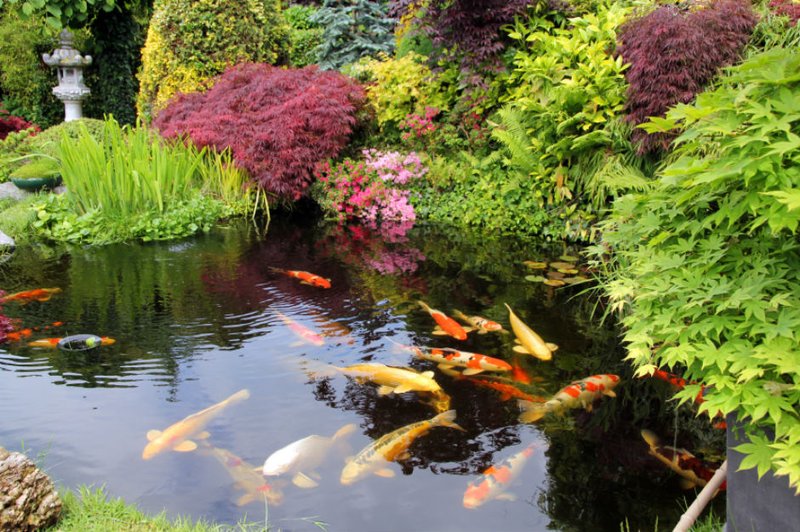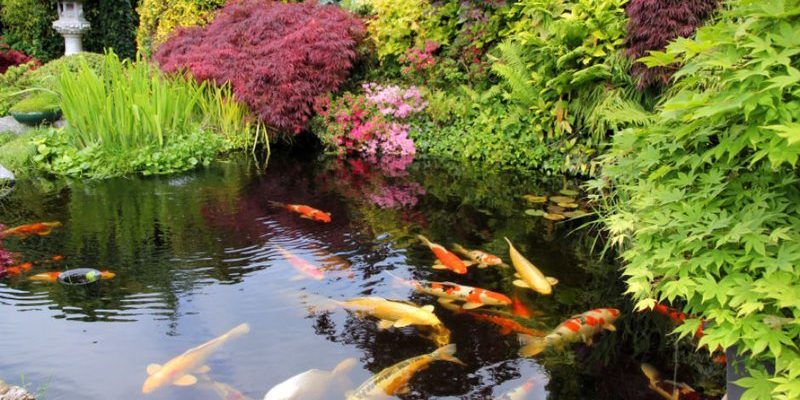
So, what do carp really need? It starts with the right temperature, depth, and filtration. Each of these factors plays a vital role in ensuring that your carp can swim happily and healthily in your pond. Let me break down these essential components for you, like chatting over coffee with a friend.
Understanding Carp Temperature Preferences
When it comes to temperature, carp are pretty adaptable, but they do have their sweet spots. Generally, they thrive best in temperatures between 70°F and 75°F. This range mimics their natural habitats, which mainly consist of warm, shallow waters. When the water is too cold, carp become sluggish and less active. You might see them loafing around instead of swimming energetically, which isn’t ideal if you want them to thrive.
During the summer months, you might notice that the water heats up, sometimes exceeding 80°F. While carp can handle this, the key is to ensure there’s enough oxygen in the water. Warm water can hold less oxygen, which means it’s crucial to look out for signs of stress or lethargy in your fish. If you spot them hanging near the surface gasping for air, it might be time to take action—like adding aerators to keep the water fresh.
You might be wondering what happens in winter. Carp tend to slow down significantly in colder months, even entering a state of semi-hibernation. They can tolerate temperatures as low as 32°F, but prolonged exposure to cold can lead to health issues. If your pond freezes over, it’s vital to keep a hole open in the ice for gas exchange. A simple pond heater can help maintain a safe environment through winter.
The Importance of Pond Depth for Carp
Now, let’s talk about depth. The ideal pond depth for carp is typically between 3 to 6 feet. Why does this matter? Well, deeper water provides a stable temperature during hot summer days and cold winter nights. Think of it like wearing a cozy sweater in winter; it keeps you warm even if it’s chilly outside.
Deeper portions of your pond can offer refuge for carp when the water temperature rises. If it gets too hot on the surface, carp can dive down to cooler layers. Additionally, having a mix of depths can create varied habitats for different aquatic life, adding diversity and helping to maintain a balanced ecosystem.
However, you don’t want to go too deep. If your pond is overly deep, it can limit sunlight penetration, which is essential for aquatic plants. These plants are important because they provide oxygen and act as natural filtration systems. Bringing in a variety of depths can help maintain a healthy balance, ensuring your carp have plenty of space to thrive while also supporting the overall pond ecosystem.
Filtration Systems: Keeping Water Clean and Clear
Here’s the thing: filtration is crucial for any pond environment. Just like we need clean air to breathe, carp need clean water to live. An effective filtration system helps remove debris, excess nutrients, and harmful toxins from the water, ensuring a healthy habitat for your fish.
There are various types of filtration systems you can choose from, but a combination of mechanical, biological, and chemical filtration often works best. Mechanical filters trap solid waste, while biological filters convert harmful ammonia into harmless nitrates. Chemical filters can help eliminate specific toxins. It’s like having a complete cleaning team that keeps everything in check!
You might also want to consider UV clarifiers. These devices can eliminate algae, which can cloud your water and rob it of oxygen. Plus, a clear pond is more attractive and easier to enjoy. Choosing the right filtration system depends on the size of your pond, the number of fish, and the local climate. It’s worth doing your homework to find the perfect setup for your needs.
Additional Factors That Affect Pond Conditions
While temperature, depth, and filtration are the big three for carp, there are a few other factors that play a supporting role. Consider water quality. Regular testing for pH, ammonia, and nitrates ensures your pond remains in balance. Ideally, pH levels should be between 6.5 and 8.5.
Don’t forget about aquatic plants! They provide shade and help oxygenate the water, creating a cooler, more comfortable environment for carp. Plants also offer hiding spots, making your pond feel more like their natural habitat. Just be careful not to overcrowd your pond with them. A bit of diversity goes a long way.
Lastly, keep an eye on the weather. Heavy rainfall can dilute the nutrients in the pond, while dry spells can lower the water level. A reliable way to manage this is to have a water source ready, like a well or rainwater collection system. You’d be surprised how much these little things can impact your fish’s environment.
Common Challenges and Solutions
Even with the best intentions, you might face some challenges in maintaining your pond. One common issue is algae blooms. These pesky plants can quickly turn your clear water into a green mess, leading to oxygen depletion. If you notice excessive algae, introducing beneficial plants or controlling nutrient levels can help.
Another challenge is dealing with pests like mosquitoes. A well-maintained pond with moving water is less likely to attract these nuisances. Investing in a fountain or water feature can keep the water flowing, which not only deters pests but adds a lovely aesthetic to your pond.
Lastly, be prepared for seasonal changes. In winter, you might need to add a de-icer to keep a small area open. In summer, focus on keeping the water aerated and shaded. Each season will bring unique challenges, but being proactive can make a world of difference.
Wrapping Up Ideal Pond Conditions for Carp
Creating the ideal pond for carp is all about understanding their needs and maintaining a nurturing environment. By keeping an eye on temperature, depth, and filtration, you can ensure that your carp thrive. Think of it as creating a mini ecosystem that not only supports your fish but also brings beauty and serenity to your outdoor space.
Remember, a healthy pond is like a well-tended garden. It requires care, attention, and a little bit of effort, but the results are incredibly rewarding when you see your carp swimming happily in clear, clean water. So, roll up your sleeves, do your research, and enjoy the process. Your carp—and your pond—will thank you!

